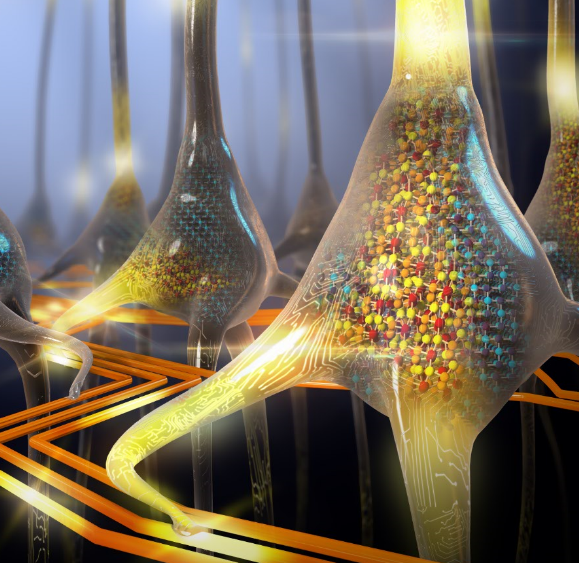World’s First Artificial Neuron: IBM’s Breakthrough Uses Phase-Change Material

For computer scientists, creation of neuromorphic systems — those inspired by and modeled after the way neurons in the human brain are structured — has been a longstanding goal. Now, in a significant step toward the development of neuromorphic technologies, a group of researchers IBM’s research laboratory in Zurich have announced that they have built a working, artificial version of a neuron.
The invention, described in a paper published in the journal Nature Nanotechnology, consists of a small square of germanium antimony telluride held between two electrodes. Germanium antimony telluride, a common ingredient in optical disks, is what is known as phase-change material. This means it can change its phase from an amorphous insulator to a crystalline conductor when hit with a strong enough electric pulse — thus acting like both, a resister and capacitor, and mimicking, to a certain extent, the behavior of biological neurons’ lipid bilayer membrane.
“In the published demonstration, the team applied a series of electrical pulses to the artificial neurons, which resulted in the progressive crystallization of the phase-change material, ultimately causing the neuron to fire. In neuroscience, this function is known as the integrate-and-fire property of biological neurons,” IBM said in a statement released Wednesday. “This is the foundation for event-based computation and, in principle, is similar to how our brain triggers a response when we touch something hot. ”
This is not the only similarity between IBM’s neurons and their organic counterparts. The artificial structures also exhibit “stochasticity,” or the ability to produce random, unpredictable results. Biological neurons are stochastic due to fluctuations within the cell — such as changes in ionic conductance and thermal background — while these artificial neurons are stochastic because the amorphous state of germanium antimony telluride always changes slightly after each reset.
So why is this stochasticity — which makes the output of a system inherently unpredictable — desirable in an artificial neuron? As the researchers explain, stochasticity lets the neurons accomplish tasks that they would not be able to do if their output were perfectly predictable — something that may eventually lead to the creation of efficient "cognitive computers" that mimic the parallel processing architecture of the human brain.
“Populations of stochastic phase-change neurons, combined with other nanoscale computational elements such as artificial synapses, could be a key enabler for the creation of a new generation of extremely dense neuromorphic computing systems,” co-author Tomas Tuma said in the statement.
© Copyright IBTimes 2025. All rights reserved.



















